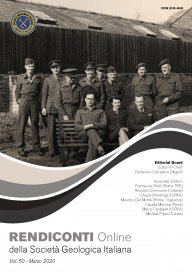
British military geology breaks new ground: geologists and geology-related maps used by the Allies in the Italian Campaign of 1943-1945
Edward P.F. Rose
Honorary Research Fellow, Department of Earth Sciences, Royal Holloway, University of London, Egham, Surrey TW20 0EX, UK.
Corresponding author e-mail: ted.rose@earth.oxon.org
Volume: 50/2020
Pages: 13-28
Abstract
British armed forces made professional use of only two military geologists as staff officers in World War I, and only two in World War II until June 1943, when appointment of Captain (later Major) J.V. Stephens broke new ground. Stephens landed in Sicily on 10 July 1943, D-Day of the Allied invasion. He served successively in Sicily and mainland Italy, as Staff Officer (Geology) at the headquarters of the Allied armies, assisting planning for advances into enemy-occupied terrain (‘operations’) and development of a military infrastructure within regions when held by the Allies (‘works’). Another geologist staff officer, Major W.A. Macfadyen, arrived in Italy in July 1944, with Allied Forces headquarters for the Mediterranean Theatre of Operations. His duties included fieldwork in Lampedusa, Pantelleria, Corsica and Sicily. The Allies used Italian geological maps reprinted by the Geographical Section General Staff of the British Army; geotechnical maps and reports compiled in England by the Inter- Service Topographical Department; and maps/reports generated in the USA by the Military Geology Unit of the US Geological Survey.
Keywords
Get Full Text